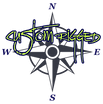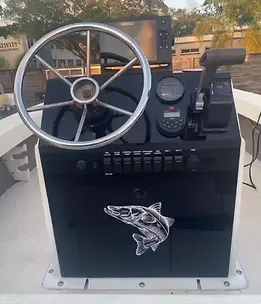Setting sail on the open water is an adventure that requires a seamless blend of technology and craftsmanship. The heart of your vessel’s control center is the marine dash panel, where navigation, safety, and monitoring systems converge. In this blog, we will embark on a journey to demystify creating a marine dash panel that suits your needs and style. Whether you’re an experienced boat owner or just getting started, this guide will help you navigate the seas of marine dash panel creation.
1. Setting Sail: Planning Your Marine Dash Panel
- Before you dive into the project, outline your goals and priorities. What systems and instruments will be on your panel?
- Explore the different types of marine dash panels, from traditional wooden designs to modern fiberglass or composite options.
- Understand the importance of ergonomics and visibility for your dashboard, as these factors can make a significant difference in your boating experience.
2. Selecting the Right Materials
- Learn about the materials commonly used in marine dash panel construction, such as marine-grade plywood, fiberglass, or acrylic.
- Discover the benefits and drawbacks of each material and how to choose the one that best suits your needs.
- When selecting materials for your dash panel, consider the environmental factors, including moisture, UV exposure, and temperature.
3. Design and Layout
- Dive into the creative process of designing your marine dash panel. Sketch your vision and consider factors like instrument placement, wiring channels, and aesthetics.
- Explore different layout options, from compact and minimalist designs to comprehensive and multifunctional dashboards.
- Ensure that your design allows easy access to essential components and provides a clean and organized appearance.
4. Instrumentation and Electrical Wiring
- Explore the range of instruments commonly found on marine dash panels, including GPS systems
, engine monitors, compasses, and more.
- Understand the basics of marine electrical wiring, ensuring your dash panel is safe and reli
able.
- Learn about using marine-grade wiring, connectors, and cable management to prevent issues at sea.
5. Crafting and Installation
- If you’re a DIY enthusiast, find step-by-step instructions on crafting your marine dash panel.
- Alternatively, consider working with a professional marine fabricator from Custom Rigged Marine to ensure precision and quality.
- Learn the importance of proper installation, including watertight seals and securing your dash panel.
6. Aesthetics and Finishing Touches
- Discover how to add personal touches to your marine dash panel through custom finishes, like wood veneers, paint, or vinyl wraps.
- Ensure your dashboard not only serves its practical purpose but also complements the overall aesthetics of your vessel.
- Find inspiration for color schemes and materials that align with your boat’s style.
7. Maintenance and Upkeep
- Learn how to keep your marine dash panel in top condition, from routine cleaning to protecting it from UV damage.
Understand the importance of periodic inspections and upgrades as technology and boating needs evolve.
Creating a marine dash panel is an art and a science. It’s where functionality meets aesthetics, and careful planning meets craftsmanship. With the guidance provided in this blog, you’re well-equipped to embark on your dash panel creation journey. Whether you’re an experienced captain looking to upgrade your vessel or a novice setting sail for the first time, we hope this guide helps you navigate the process confidently and creatively. Your maritime adventure begins right here at the helm!
For all your questions, reach out to Custom Rigged Marine at 754-423-5699 or [email protected]

